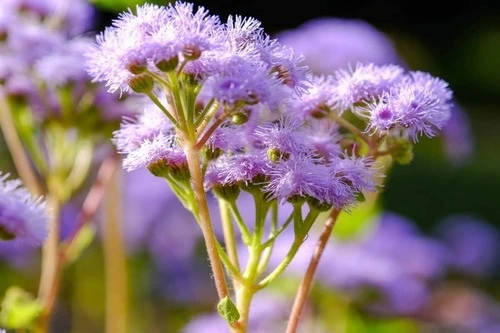Explore 10 Mosquito Repellent Plants
- Author: Saiqa Najeeb
- Last Updated On: August 11, 2023

Want to say goodbye to the pesky bloodsuckers—mosquitoes? These tiny creatures are not just annoying but cause a plethora of diseases, from Dengue to Zika.
The best part is that you don’t need to use any chemical-based products in your garden to get rid of these buzzing villains. Instead, you can grow some plants that will keep these mosquitoes at bay and add beauty to your garden.
This guide will give you a list of plants that you can grow in your home garden, to make these mosquitoes flee in terror. Read on to discover the beauties and bid farewell to the mosquitoes.
Mosquito Repellent Plants
1
Tansy, Pyrethrum, Feverfew (Tanacetum genus)

Life Cycle: Perennial.
Height: 3-4 feet.
Spacing: 12-18” apart.
Light Requirements: Full sun to partial shade.
Additional Uses: Plants are used as a source of nectar for butterflies. repels bedbugs, ants, cockroaches, moths, mice, and flies.
2
Lavender (Lavandula angustifolia)

Life Cycle: Perennial.
Height: 18-24”.
Spacing: 12-18” apart.
Light Requirements: Full sun to partial shade.
Additional Uses:
The flowers of the nectar plant for butterflies can be dried and used in potpourris and sachets. Lavender can also be used as a meat dish, as a tea, or as an aromatherapy treatment. Repels silverfish, fleas, flies, and mosquitoes.
3
Mint - Peppermint (Mentha piperita)

Life Cycle: Perennial.
Height: 24-36”.
Spacing: 12-18” apart.
Light Requirements: Full sun to partial shade.
The leaves are also used as a food source for larvae and as fresh nectar for butterflies. repels ants, mice, rats, flies, mosquitoes, and other flying insects. Chiggers and ticks can be repelled by applying mountain mint to clothing. Similar scents can be found in horsemint and citronella. It is also used to treat the common cold and the flu. Due to the high thymol content of its essential oils, it naturally has antibacterial and fungicidal properties.
4
Catnip (Nepeta cataria)

Life Cycle: Perennial.
Height: 2-3 feet.
Spacing: 12-18“ apart.
Light Requirements: Full sun to partial shade.
Butterfly nectar plants have additional uses, and your cats will adore them. Nepetalactone, an essential oil found in catnip, is allegedly 10 times more powerful than DEET. Catnip is an herb that is typically stuffed inside toys or given to cats to enjoy. The leaves are used to make soothing tea. And to intensify the effect, rub a few crushed catnip leaves on your skin and clothing.
5
Citronella - Nard grass (Cymbopogon nardus)

Life Cycle: Perennial
Height: 5-6 feet.
Spacing: 3-5 feet apart.
Light Requirements: Full sun to partial shade.
Additional Uses: Citronella candles are made with the plant’s oil.
6
Lemon Grass (Cymbopogon citrates)

Life Cycle: Perennial
treat as annual elsewhere.
Height: 2-3 feet.
Spacing: 3-5 feet apart.
Light Requirements: Full sun to partial shade.
Additional Uses: The leaves of lemon grass are used in cooking.
7
Basil (Ocimum basilicum)

Life Cycle: Annual.
Height: 2 feet.
Spacing: 18-24” apart.
Light Requirements: Full sun to partial shade.
Additional Uses: Plant that attracts butterflies; the leaves are used to flavor food when cooking. Basil is a plant that deters mosquitoes as well. One of the herbs whose scent is released Without being crushed is basil. Basil plants can be grown in pots and placed in your backyard to repel mosquitoes. Rub a few basil leaves that have been crushed on your skin to repel mosquitoes. Any variety of basil can be used to repel mosquitoes, but the strongest-smelling varieties—Cinnamon, Lemon, and Peruvian—seem to be the most effective. Basil is also a fly
Grow it near outdoor seating areas to make it repellent.
8
Ageratum, or Floss Flower (Ageratum houstonianum)

Life Cycle: Annual.
Height: 6-12”.
Spacing: 6-8” apart.
Light Requirement: Full sun to partial shade.
Additional Uses: This adorable little plant contains coumarin, which has a horrible odor that repels mosquitoes. It is used in perfumery and even in some commercial mosquito repellents. Pure ageratum should not be applied to the skin because it contains some unfavorable ingredients.
9
Rosemary (Rosmarinus officinalis)
Life Cycle: Perennial herb or groundcover.
Height: 4-5’ Spacing: 2 feet apart.
Light Requirements: Full sun to partial shade.
Additional Uses: The leaves are used in lamb and fish dishes, as a butterfly nectar plant, and as a drought-tolerant plant. The oil in the rosemary herb acts as a natural mosquito repellent. While they are attractive plants that can both repel mosquitoes and add flavor to your cooking. They are true tropical plants that do not tolerate cold temperatures. So grow rosemary in a pot and bring it inside during the winter.
10
Lemon Balm (Melissa officinalis)

Life Cycle: Perennial.
Height: 2-3 feet.
Spacing: 12-18” apart.
Light Requirements: Full sun to partial shade.
Additional Uses: All of the leaves can be used in potpourris, to flavor hot and iced teas, and to replace lemon peel in cooking. Lemon balm repels mosquitoes as well. Lemon balm grows quickly and needs space to spread. Citronellal compounds are abundant in lemon balm leaves. Citronella is found in a variety of commercial mosquito repellents. Some lemon balm varieties contain as much as 38% citronella. Grow lemon balm in your garden to repel mosquitoes. Lemon balm’s crushed leaves can also be applied to the skin to repel mosquitoes.
Check out more about mosquito repellent plants
There we go!
So you have explored some wonderful mosquito repellent plants, from fragrant herbs to vibrant flowers. These flowers can keep mosquitoes at bay without any need for harmful chemicals.
By adding these plants to your garden, you can save yourself from the health risks that come with mosquitoes. So, it’s time to say goodbye to the bloodsuckers and say hello to these garden beauties.


